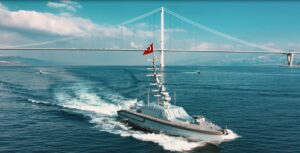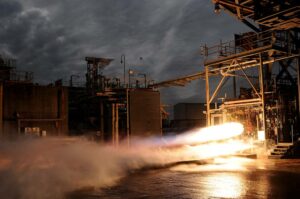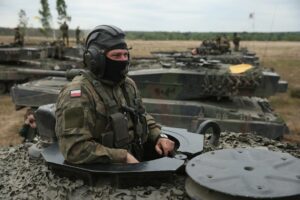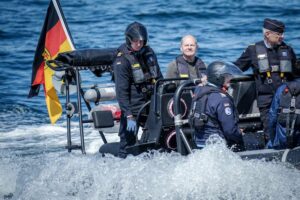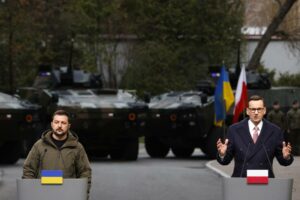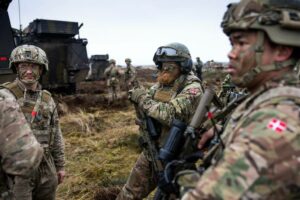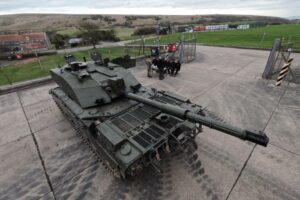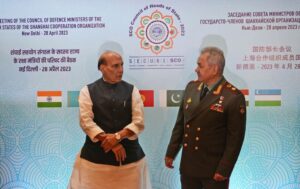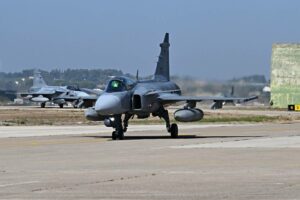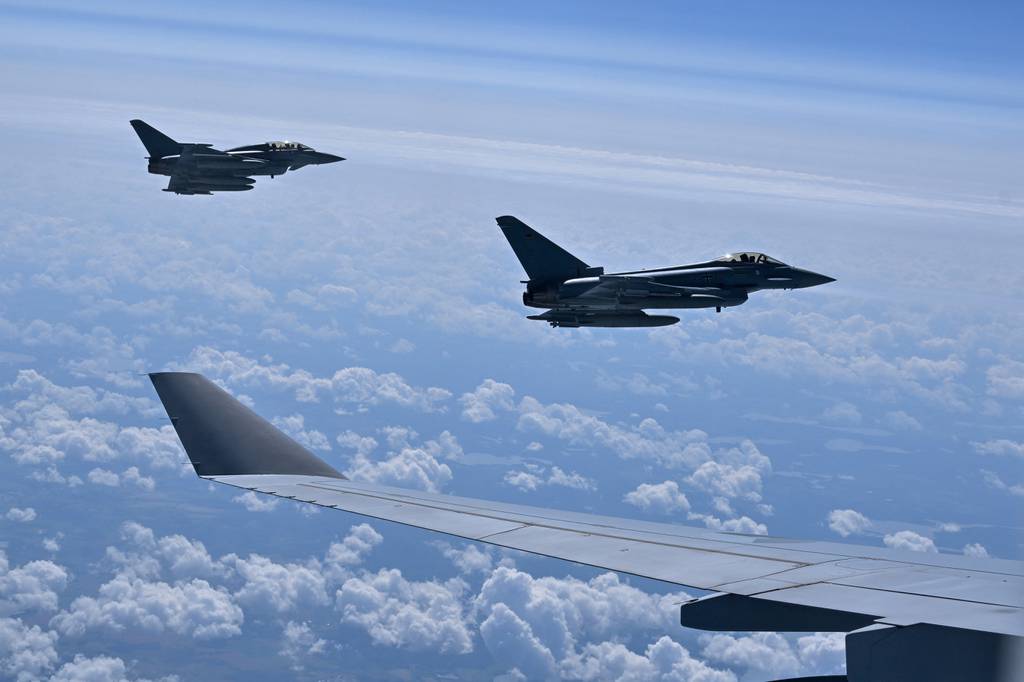
MUNICH — German and Czech sensor specialists Hensoldt and ERA have formed a strategic partnership with the aim of providing an integrated airspace surveillance system to the German Luftwaffe, according to an Aug. 31 statement by the companies.
The combined system is billed as being a capable and stealthy option for the surveillance of vast swathes of airspace without needing to emit any radar signals. This makes it challenging for adversaries to detect its use or locate the antennas. Additionally, the system is portable, a Hensoldt company spokesperson told Defense News in an email. Each complete system consists of at least two substations, according to the spokesperson.
The two companies are combining the German Twinvis passive radar and ERA’s VERA-NG system into one package. Data from both components can be fused, the press release stated, allowing for a more granular and comprehensive air picture.
Hensoldt said in an email that the combined system is already available to customers.
The German company’s Twinvis system relies on the reflections of signals originating from radio and television stations, calculating positional data of objects moving through that ubiquitous signal soup. ERA’s equally covert VERA-NG relies on electromagnetic emissions coming from aerial vehicles themselves, measuring the signals’ time of arrival at several stations to locate their source.
According to ERA’s online product page, the electronics support measures — ESM — system allows for “cross-border, long-term and long-range surveillance without alerting neighboring nations” as well as electronic intelligence insights.
VERA-NG can passively detect emissions from aircraft at long distances while Twinvis is able to detect even radio-silent aircraft at somewhat shorter ranges.
The combined system’s promised capabilities have attracted “numerous” countries’ interest, Hensoldt told Defense News. In an interview, a company spokesperson said that potential customers were a mix of NATO- and non-NATO nations but refused to provide further details, citing the system’s secrecy as one of the main selling points.
The company would not confirm whether the German Luftwaffe had placed an order for the system yet or was in any other way involved in the venture. In the press release, the companies said the primary aim of the partnership was to “jointly offer” both technologies to the air service.
Linus Höller is a European correspondent for Defense News. He covers international security and military developments across the continent. Linus holds a degree in journalism, political science and international studies, and is currently pursuing a master’s in nonproliferation and terrorism studies.
- SEO Powered Content & PR Distribution. Get Amplified Today.
- PlatoData.Network Vertical Generative Ai. Empower Yourself. Access Here.
- PlatoAiStream. Web3 Intelligence. Knowledge Amplified. Access Here.
- PlatoESG. Automotive / EVs, Carbon, CleanTech, Energy, Environment, Solar, Waste Management. Access Here.
- PlatoHealth. Biotech and Clinical Trials Intelligence. Access Here.
- ChartPrime. Elevate your Trading Game with ChartPrime. Access Here.
- BlockOffsets. Modernizing Environmental Offset Ownership. Access Here.
- Source: https://www.defensenews.com/global/europe/2023/09/01/hensoldt-era-fuse-passive-sensing-tech-in-bid-for-luftwaffe-deal/
- :is
- :not
- 11
- 31
- 70
- a
- Able
- According
- across
- Additionally
- aim
- AIR
- aircraft
- airspace
- Allowing
- allows
- already
- an
- and
- any
- ARE
- arrival
- AS
- At
- attracted
- Aug
- available
- BE
- being
- bid
- both
- but
- by
- calculating
- CAN
- capabilities
- capable
- challenging
- combined
- combining
- coming
- Companies
- company
- Company’s
- complete
- components
- comprehensive
- Confirm
- consists
- continent
- covers
- Currently
- Customers
- Czech
- data
- deal
- Defense
- Degree
- details
- developments
- each
- Electronic
- Electronics
- Emissions
- equally
- Era
- European
- Even
- For
- formed
- from
- further
- German
- had
- Have
- he
- holds
- HTTPS
- images
- in
- insights
- integrated
- Intelligence
- interest
- International
- Interview
- into
- involved
- IT
- ITS
- journalism
- jpg
- least
- linus
- Long
- long-term
- Main
- MAKES
- master’s
- measures
- measuring
- Military
- mix
- more
- moving
- Nations
- needing
- neighboring
- news
- objects
- of
- on
- ONE
- online
- Option
- or
- order
- originating
- Other
- package
- page
- Partnership
- passive
- picture
- plato
- Plato Data Intelligence
- PlatoData
- points
- political
- potential
- potential customers
- press
- Press Release
- primary
- Product
- promised
- provide
- providing
- radar
- Radio
- Reflections
- release
- Said
- Science
- security
- Selling
- service
- several
- Signal
- signals
- somewhat
- Source
- specialists
- spokesperson
- stated
- Statement
- Stations
- stealthy
- Strategic
- Strategic partnership
- studies
- support
- surveillance
- swathes
- system
- tech
- Technologies
- television
- Terrorism
- that
- The
- their
- themselves
- this
- Through
- time
- to
- two
- ubiquitous
- use
- Vast
- Vehicles
- venture
- was
- Way..
- WELL
- were
- whether
- while
- with
- without
- would
- yet
- zephyrnet

